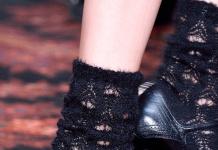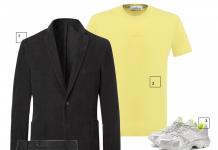(4
estimates, average: 5,00
out of 5)
This article will touch on a not entirely trivial exercise for the muscles of the back - the T bar deadlift. This allows you to gain back muscle mass and work out its thickness.

In terms of biomechanics, it is very similar to, but it is much easier to perform it by adhering to the correct technique.
Row T bar: features of the exercise
The T bar deadlift allows you to deeper work out the muscles of the back between the shoulder blades, just forming its thickness. This exercise loads the lats, large circular muscles of the back, long extensors, trapezius, rhomboid, posterior bundle of deltoids, in addition, the muscles of the forearms and thighs work in statics. As you can see, a huge layer of back muscles and stabilizer muscles.

There are many machines for performing the T bar deadlift. These are special lever structures, where you need to pull while standing, and simulators in which the exercise is performed lying down. However, in the latter version, it is inconvenient to fix the deflection in the lower back, which is necessary for a more effective contraction of the lats.
And finally, in the absence of special equipment, you can perform the T bar deadlift with a regular barbell. One end rests on the floor and rests on something, at the other end weights and a grip handle from a block trainer are installed.
The difference between the T bar row and the bent-over row is in fixing the bar in one of the planes of motion. This greatly simplifies your task, because the bar essentially has to be lifted along a pre-selected, correct trajectory without additional effort.

The undoubted advantage of this exercise is the ability to take more weight than in the bent-over row, because execution technique is facilitated. Less work of the stabilizer muscles allows you to target the muscles of the back, and even more weight. The work that the stressed muscles have to do increases.
One of the most important rules of any back exercise is lower back flexion. This rule applies to the T bar thrust primarily due to the increased working weights. By bending your knees and pulling your pelvis back, you achieve a comfortable, and most importantly safe position for a complete contraction of the back muscles.
Make sure that your lower back is not rounded in the starting position. You can remove the rounding by deeper abduction of the pelvis back and bending the legs at the knees.

Because the projectile is fixed, and you do not have the ability to move it. Your task is to choose such a position in which the amplitude for contraction of the back muscles will be greatest. Position yourself too close - the projectile may touch your knees, far away - the amplitude will be ineffective. It is optimal to attract the projectile to the lower abdomen.
The grip width is the same as the bent line. The narrower the grip, the greater the amplitude, but the biceps work out a lot, stealing the load from the back muscles. The wider the grip, the better the back muscles we need contract, but the amplitude becomes smaller. Therefore, you should choose the amplitude based on the rule of the golden mean and on the design features of your body. Find one with a grip where you can feel your lats better.
T-bar deadlift technique
In the T bar row, the technique is almost identical to the bent-over barbell row. Fundamental rules:
- Exhale on the rise (heavy phase), inhale on the descent.
- At the lowest point, keep your elbows slightly bent so that the entire load lies on the back muscles, and not on the arms.
- As you move through the exercise, think only of how your lats are stretched at the bottom and how they are contracting at the top.
- At the top point, delay the peak contraction for a second.
- The pace of the exercise is slow on the descent, faster on the ascent.
- The load on the lats should be held throughout the entire set (do not allow the arms to be extended at the elbow and relax them).
Row T bar: video
In order to better understand how to perform the T bar deadlift exercise, a video from Denis Borisov will tell and show the correct and safe execution technique.
Watch also an interesting video from Alexander Shchukin, in which he works his back with the T bar deadlift.
Conclusion
The T bar deadlift allows for more isolated loading of a huge layer of back muscles. The main obstacle in this exercise can only be your ego. Many athletes were injured when they took incredible weights in this exercise.
By adhering to the basic principles of doing the T bar deadlift, you will work your back muscles safely and effectively.
Get better and stronger with
Read other blog articles.
The T-bar row is designed to work your large back muscles. The movement is similar in mechanics to the barbell pull to the belt, however, the correctness of the exercise here is somewhat easier to control. Thanks to this, the athlete can work with more significant weights, without admitting the risk of injury. T-bar deadlift is undemanding to equipment. It can be done both in a special simulator and with a conventional barbell.
The main load during movement falls on the latissimus dorsi muscles. The trapezium, large round, rhomboid muscles, spinal extensors and posterior deltas work. The deadlift works well in the area between the shoulder blades. In addition, the biceps are involved, and the static load goes to the press, muscles of the forearms and hips.
Distribution of the load during the exercise.
Bent-over T-bar rows develop several large muscle groups at once. This allows you to get a good load and shape a nice and wide back.
Correct execution
It can be performed both on a special simulator and using a conventional barbell, from one end of which the pancakes are removed.
There are many types of deadlift machines. Some of them allow you to do the exercise while lying down. The advantage of this embodiment is that the static load is removed from the legs. But there is also a significant disadvantage - lying down it is impossible to achieve a deflection in the lower back, due to which the maximum contraction of the latissimus muscles of the back is achieved.
There are also simulators where you stand with your feet on a special platform and pull up the bar with the handle attached. Such a simulator is very good, the main thing is to take a comfortable position in it, in accordance with your height and degree of flexibility.
There are trainers with a chest rest, handles for different grips, and other equipment. The principle of muscle work is the same everywhere. To understand the technique, consider the simplest option - with a conventional barbell. Having understood the mechanics of movement with a barbell, it will be as easy as shelling pears to cope with the simulator.
 The technique of performing a deadlift with a barbell with special handles.
The technique of performing a deadlift with a barbell with special handles. So, first, take the starting position:
- Place the required number of pancakes on one end of the bar. Place the other end in a corner, or have your partner secure it with his foot. If a special handle is available, attach it to the fretboard closer to the pancakes. If not, it's okay - the bar is taken with both hands near the pancakes. One brush is placed in front, the other behind. After the approach, change hands. Alternatively, you can place the fingers of one hand on top.
- Place the barbell between your legs, bend over with a straight back, bending your knees. Grab the bar as tight as possible, tighten your abs. Raise the body so that the pancakes are lifted off the floor. The movement should be performed at the expense of the back muscles. Bent knees are needed so that you can keep the lower back arch. The barbell should not be lifted at the expense of the legs.
Traction execution:
- As you exhale, due to the work of the back muscles, pull the bar towards you. At the same time, the elbows move close to the body. Hold for a second at the top point, bringing the shoulder blades together and achieving a peak muscle contraction.
- While inhaling, gently lower the bar to its original position, while you should feel a stretch in the back muscles. The elbows at the lowest point do not fully unbend, the pancakes remain in weight.
 In the absence of handles, the bar can be held with your hands.
In the absence of handles, the bar can be held with your hands. Perform the described movement 8-12 times. Take a break for 1 minute and do 1-2 more sets. The deadlift is a basic exercise and should be done at the start of your workout.
If you are doing a row in a machine or with a special handle, the width of the grip you use has a certain value. The narrower the grip, the more the range of motion is obtained, but the more the biceps are involved in the work. The wider the grip, the less the hand muscles are involved, but the range of motion is reduced. It is recommended to alternate the grips for a comprehensive back workout.
To keep the T-bar thrust completely safe and as efficient as possible, read these tips:
- Do not start your workout with too much weight. Many athletes are injured due to the fact that they choose prohibitive weight.
- Make sure that the movement of the bar is carried out by the work of the muscles of the back, and not with the help of the biceps. During training, mentally imagine how the muscles of the back are tense at the top and how they are stretched at the bottom.
- At the lowest point, do not unbend your elbows to the end.
- The movement should be performed in an incline, but with a perfectly flat back and natural deflection in the lower back. A crooked back while pulling can cause serious injury to the lower spine. In order to get into the correct position, take your pelvis back, tighten your abs and bend your knees.
- Keep your elbows as close to your body as possible, this will make it easier to control the movement of your arms.
- Stick to a certain pace: slowly lower the barbell and quickly raise it up. Avoid jerking, all your movements should have the same amplitude and be smooth.
- Monitor compliance with the technique. If you are tired, then take a break, take a break and continue the approach.
The T-bar deadlift will be easier if you use smaller pancakes. Large pancakes not only reduce the range of motion, interfering with you, but also prevent you from comfortably grasping the barbell. Use small, heavy pancakes whenever possible. From a convenience standpoint, it's better to hang several small pancakes than one healthy one.
Bent-over T-bar rows are a great basic exercise for building your back muscles. Due to the fact that the deadlift does not require complex equipment and serious physical training, it is popular among athletes of all levels. Learn the correct technique for this exercise and enjoy the great results!
In strength sports, the t-bar deadlift has earned a reputation as one of the best back exercises. It allows you to work with large weights, perfectly develops the width and thickness of the back, and most importantly, it is distinguished by increased safety in comparison with other movements. Nevertheless, it is very important to perform the deadlift correctly, otherwise its effectiveness will be significantly reduced, and the risk of injury, on the contrary, will increase. In this article, we will study in detail all the nuances of the deadlift, important features and the correct execution technique, the observance of which will allow you to get the maximum benefit from the deadlift.
Efficiency and Benefits of T Bar Rows
The first place to start is that the T-bar row is one of the most natural movements from an anatomical standpoint. It is present in the life of most people and, thanks to regular training, the back will not be prone to injury (protrusion, hernia, disc popping out, etc.). This exercise is also one of the main elements of creating an aesthetic V-shaped figure, which today is appreciated not only among men, but also among women. The deadlift plays an especially important role for beginners. Exercise allows you to rapidly progress in muscle mass and increase strength in all pulling movements. The main problem is that not only beginners, but also advanced athletes actively avoid the t-bar deadlift in the slope. Sometimes the problem is the lack of an appropriate simulator, although the most common cause is an incorrectly designed training program. Deadlift is one of the main exercises for most professionals that can provide the following benefits:
Deadlift is one of the main exercises for most professionals that can provide the following benefits: - a basic movement that involves a large number of muscle fibers (which means it develops the muscles of the whole body, and not just working groups);
- ideal for increasing muscle mass and back strength;
- works on almost the entire back and back deltas;
- allows you to highlight each muscle of the back and outline the divisions;
- significantly improves posture;
- minimal injury risk and absence of compression impact on the spine.
It is important to remember that all these benefits will only be realized if the correct execution technique is followed. Otherwise, it is better to do a simpler exercise, for example, a link arm, in which the body is already fixed and it is very difficult to make technical mistakes.
 If you evaluate the movement by which muscles are working during its execution, then using the t-bar will stand out favorably against the background of other back exercises. It uses:
If you evaluate the movement by which muscles are working during its execution, then using the t-bar will stand out favorably against the background of other back exercises. It uses: - latissimus dorsi (main load);
- trapezoid;
- rear deltas;
- small of the back.
 Also, the hands and the press take on part of the load, but the main task in mastering the technique is to exclude the biceps from work as much as possible. The better the athlete can do this, the more effective the deadlift will be.
Also, the hands and the press take on part of the load, but the main task in mastering the technique is to exclude the biceps from work as much as possible. The better the athlete can do this, the more effective the deadlift will be. Technique and features of traction
There are two main types of rods: in the simulator and with a conventional barbell. In the first case, everything is simple, you fix the body using a simulator (if it has a chest pillow) or simply remove the weight from the stand and perform the exercise. In the second case (if there is no simulator), you will have to pull the t-bar with an emphasis on the wall. This option is no worse, and sometimes even better than the exercise one. It allows for better weight control, and avoids one of the main drawbacks of simulators - grip handles. Studies have shown that athletes can take the most weight in an exercise only with a neutral narrow grip. That is, this is the natural grip with which you can grip the bar of the bar. The presence of handles, on the one hand, can be a plus, for example, changing the neutral grip to a straight line (palms facing you), but in this case it will be better to pull the bar in an inclination towards the belt. This is a completely different exercise that is best done with a wide grip. The correct deadlift technique would look like this:
The correct deadlift technique would look like this: - Walk up to the bar and stand over it so that it lies flat between your legs. Lean forward and grab it with your hands, near the top end (in front of the pancake retainer).
- At a moderate pace, begin to pull the bar towards you, carrying out the movement at the expense of the back muscles and straightening the shoulders back. Finally, use your arms to pull the bar as close to you as possible.
- After a minimal pause, return the bar back, stretching the lats at the lowest point.
Key features and main mistakes
If we talk about the most important mistakes that can be made when performing the deadlift, then in the first place will always be a rounded back. It instantly transforms potentially one of the best exercises for the muscles of the back into an ineffective and harmful movement for the spine. Therefore, at the stage of mastering the technique, try to do deadlifts with a trainer who will point out mistakes, or near a mirror. Among other important recommendations that must be followed, it is worth highlighting the following rules:
Among other important recommendations that must be followed, it is worth highlighting the following rules: - If the stretch does not allow, you do not need to bend over so that the body is parallel to the floor. Increase the incline, but keep your back straight.
- Always pull the pelvis back, without this it is anatomically impossible to maintain the correct position of the back.
- The neck should be straight, that is, the gaze is directed to the edge of the bar.
- If it's hard to hold the bar with both hands, use a towel. Slip it under the bar and hold both ends with your hands. It will also help to strengthen the forearms additionally, but it is important to maintain full range of motion.
- Use stacked pancakes, a step platform, or any other ledge to increase the amplitude.
- At the bottom, you should "open" your lats and lower your shoulders down, this will help stretch your back muscles and increase your deadlift efficiency.
- Start lifting the bar not with your hands, but with your back muscles and back deltas. To do this, bring your shoulder blades as close as possible and put your chest forward. Only when you have reached the stop and the muscles of the back have contracted as much as possible, reach the bar with the help of your hands.
- Remember to move the bar towards you moderately or even quickly if you are working in an explosive style (not recommended for beginners) and lowering the bar should be done more slowly. The negative phase plays just as important a role as lifting weights.
Conclusion
It is unlikely that any of the experienced athletes will be able to answer you the question of how to replace traction. Each type of deadlift is effective in its own way and the t-bar has a lot of advantages over other exercises. It should also be borne in mind that it is better to set the cravings at the beginning of the workout, when the muscles are not yet tired, but only after a thorough warm-up.If you do the deadlift after other back exercises, your arms will engage in the deadlift much more to compensate for the load, which will reduce its effectiveness.In general, for beginners, the t-bar deadlift should be # 2 on the list, second only to pull-ups in efficiency. Already after 1–2 months, after the inclusion of the exercise in your training program, you will be able to feel an increase in strength and see an increase in muscle mass.
It consists in fixing one end of the bar. As a result, there is no need to control the trajectory of the bar movement and only the back muscles are involved in the work, excluding the work of the stabilizer muscles. There are several element exercisers that allow you to work from a prone or standing position. In the absence of the latter, you can connect a conventional barbell to work.

Execution technique
The technique for performing the t-bar deadlift is as follows:
- We take a barbell and set the required number of pancakes on one end of it. We fix the other end of the inventory in the corner or rest against something solid on the floor. We attach the handle from the horizontal pull trainer to the bar next to the pancakes. In the absence of the latter, we take the bar with both hands closer to the pancakes. In this case, we place one hand a little closer to the pancakes, and the other a little further. After each approach, the position of the hands must be changed.
- We place the barbell between the legs, slightly bent at the knees. We bend over, keeping our back straight with a natural deflection in the lower back. We tighten the muscles of the legs and abs and take the end of the reef in our hands. We direct our gaze forward.
- We pull the bar towards us, exhaling. In this case, the latissimus dorsi muscles should work. We linger at the top point for a few seconds, while bringing the shoulder blades together. The contraction of the back muscles should be felt.
- Slowly lower the barbell while inhaling to its original position. At the same time, the muscles relax, the elbows do not bend to the end, and the pancakes do not touch the floor.
- We do three sets of 10-12 reps.
Important! When performing the element, watch the work of the back muscles. The legs should only take a static load. You also need control over the trajectory of movement of the elbows: they should always be close to the body.
Exercise options
Before starting the training, you need to decide on the load, depending on which part of the back you are going to pump. In accordance with this, the following options for performing the element are distinguished:
Bent Over T Bar Row
This version of the t-bar row is used when it is necessary to emphasize the load on the upper back. In this case, you just need to get away from the part of the neck on which the pancakes are attached. At the same time, try to calculate the distance at which you should stand as accurately as possible, otherwise you risk getting an inadvertent blow to the head with a sharp jerk of the bar.
Row t bar to the belt in the slope
This type of exercise is used when pumping the lower latissimus dorsi. Here you should take a position as close as possible to the edge of the simulator, i.e. to the end of the bar with pinned pancakes.
The grip is also of great importance. The wider it is, the stronger the small and large round muscles will work. The parallel and narrow grip uses more of the latissimus dorsi. And the reverse grip will allow you to deeper work the lower part of the broadest muscles, connecting the biceps to the work.

In order for the exercise to bring the best result and not entail possible injuries, you need to adhere to the following recommendations:
- Correct initial position... Particular attention should be paid to the angle of inclination. The smaller it is, the greater the load on the lower lats. As the angle of inclination approaches the straight line, the upper back will be worked out more. Whichever angle you choose, you need to keep your back straight with a natural deflection in the spine.
- Selection of burden... Do not overload yourself: start with low weights, gradually increasing the load. For heavy weights, an athletic belt can be used. But remember that it makes it difficult to keep your back straight and interferes with proper breathing. Choose pancakes with a smaller diameter: large pancakes interfere with the grip and reduce the range of motion.
- Technique control... Make sure that during the execution of the element the back works, and not the biceps. Watch the elbows and the position of the back: the former should always be closer to the body, and the latter should remain straight at each point of the element.
- Pace... Choose the most comfortable pace for the exercise. Avoid jerking, all movements should be smooth: slowly lower the bar and quickly raise.
Conclusion
The bent over bar row is a very popular exercise among athletes. It does not require serious physical training and sophisticated equipment, and it is just perfect for pumping your back. Take comfortable weights and start training: the result will not be long in coming!
Last updated article: 08/30/2014
Good day to all! In that article, we will look at such a wonderful basic exercise for the muscles of the back, the T-Bar Row. This exercise is very effective and produces good results when done correctly. It is excellent for and promotes hypertrophy of the muscle fibers of the back.
Muscles worked: the area of the broadest muscles, trapezium, biceps, shoulder muscles, as well as the flexor muscles of the wrist.
This exercise is quite effective in increasing the width of the back muscles. Of course, to increase the width of the back, bent over rows are more suitable. Taking these two exercises, in my opinion, the T-bar row is much easier to perform than. This simplicity is due to the fact that in our exercise the projectile is fixed, while the bar can move in different directions, at different slopes, and we have to hold it at the correct angle throughout the entire exercise. This makes the task very difficult, and the weight that can be hung on the barbell is significantly inferior to the weight that we can hang on the T-bar.
Generally speaking, the T-bar Row is aimed at working out the lats, namely the inside. This allows you to focus on the thickness and massiveness of the back muscles. Also, this exercise develops muscle strength well.
As mentioned above, in addition to the back, other stabilizing muscles (press), as well as pulling muscles (biceps) are involved in the exercise. For the T-bar row to be more effective, you need to concentrate as much of the load on the back as possible. Sometimes the athlete does the exercise incorrectly, distributing the load between the biceps and back is not correct. In this exercise, a pulling muscle such as the biceps should be nearly eliminated from the exercise, meaning the athlete should be pulling with the back muscles, not the biceps. Remember an exercise like the principle there is very similar.
There are also two types of simulators for performing this exercise, namely: a simulator with an emphasis and without an emphasis. An exercise machine with an emphasis allows you to maximize the use of the back muscles, since it excludes the work of many stabilizer muscles, and also helps to keep the trunk stationary, allowing you to significantly increase the load on the back. As for the simulator without an emphasis, then there, the exercise will be a little more difficult, because you will have to watch your back, keeping it straight and your torso, keeping it stationary.
TECHNIQUE FOR PERFORMANCE OF EXERCISE "T-BARREL" ON A BENCH WITH A SUPPORT
1. Adjust the support in the simulator for your own height, so that it would be convenient for you to perform the exercise. Your chest should rest on a special support.
2. Stand on the platform for feet, rest your chest on the support, hands take the handle. The handles can be for direct and neutral grip, each of which loads one or another part of the back. A neutral grip works on the lower back, a straight grip on the upper back.
3. Remove the bar from the racks and hold it with outstretched arms. The back is straight.
4. When the starting position is accepted, hold your breath and raise the bar. Remember that the pulling muscles are the back muscles, not the biceps. At the peak, we exhale, then slowly return the bar to its original position. At the lowest point, you cannot lower your arms completely, you need to maintain a stretch of the back muscles, make a slight bend in the elbow joints and do not straighten them completely.
5. Perform the required number of repetitions.
TECHNIQUE FOR PERFORMANCE OF EXERCISE "T-BARREL" ON THE BENCH WITHOUT SUPPORT
 1. We take the starting position. We stand in the simulator, with our feet on the platform. To keep your back straight and make a slight deflection in the lower back, you need to take your buttocks back, your back is straight, your legs should be bent at the knees. If the athlete's back is round, the back muscles will not be able to fully contract during the exercise.
1. We take the starting position. We stand in the simulator, with our feet on the platform. To keep your back straight and make a slight deflection in the lower back, you need to take your buttocks back, your back is straight, your legs should be bent at the knees. If the athlete's back is round, the back muscles will not be able to fully contract during the exercise.
2. We take the handle with our hands, take a deep breath, holding our breath, pull the bar to the chest. At the top, we exhale. While lowering the T-bar, we exhale, then, repeating the movement towards the chest, we inhale.
3. Perform the required number of repetitions.
TIPS FOR DRAWING THE T-BAR
1. While driving to the peak point, do not lean back, this will be cheating, and the back muscles will not receive the necessary load.
2. If you have weak forearms, you can use straps to hold the bar. In order that such a need does not arise, it follows.
3. To increase the amplitude, in some simulators it is necessary to use pancakes with a smaller diameter.
4. If you cannot perform an exercise without cheating at least 8-10 reps, you should reduce the weight, as the one you are using is too large.



































